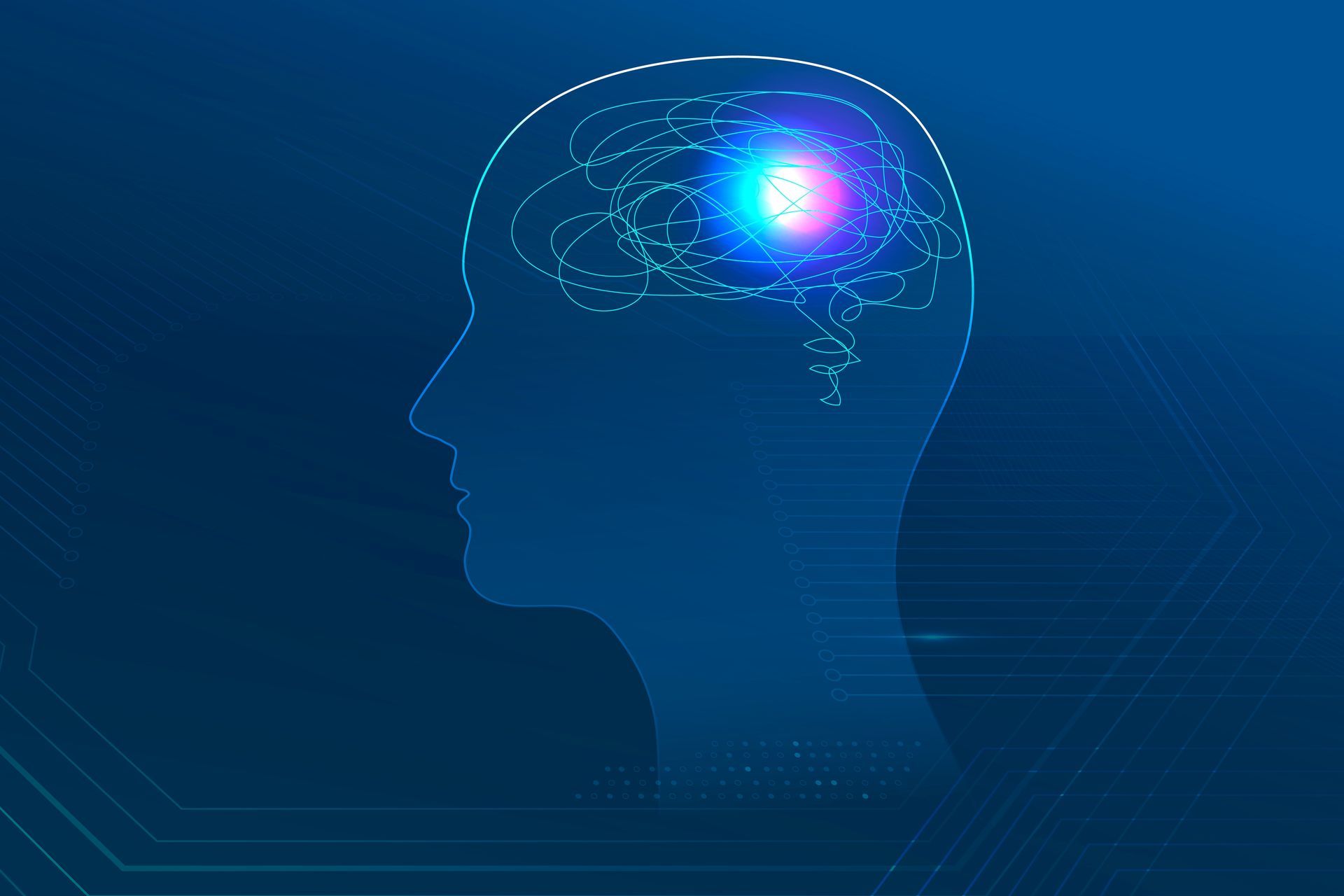Data fuels innovation and insights and one approach stands out for its ability to not only predict but also embrace uncertainty: Bayesian reasoning. Today, as machine learning algorithms continue to shape our world, the integration of Bayesian principles has become a hallmark of advanced predictive modeling.
From personalized recommendations to medical diagnoses, Bayesian reasoning adds a layer of sophistication that reflects the complexities of real-world uncertainties.
Even if your plan on paper is quite simple, creating an algorithm from scratch is complicated and unpredictable, but luckily there are many mathematical theorems you can use for your next ML initiative.

How are Bayesian reasoning and machine learning connected?
Imagine you’re trying to make predictions or understand patterns in a large amount of data. This is where machine learning comes in. Machine learning algorithms are like tools that help computers learn from data and make informed decisions or predictions. On the other hand, Bayesian reasoning is a way of thinking about uncertainty and making decisions based on probabilities.
Let’s break it down step by step.
What is Bayesian reasoning?
Bayesian reasoning is a way of thinking about uncertainty. Imagine you’re trying to predict whether it will rain tomorrow. You might start with a “prior belief” based on historical data and knowledge. This belief is like your initial guess. As you gather more information (e.g., checking weather forecasts, looking at clouds), you update your belief with this new evidence. This updating process is what Bayes’ theorem captures.
It allows you to combine your prior belief with new data to arrive at a more informed belief, which is called a “posterior belief”. So, Bayesian reasoning helps you adjust your beliefs as you get more information.
What is machine learning?
Now, think about a scenario where you have a lot of data about people’s heights and weights. You want to build a model that can predict someone’s weight based on their height. Machine learning algorithms help you find patterns in this data. For example, the algorithm might notice that as height increases, weight tends to increase too. It learns these patterns by adjusting its parameters (numbers that control the model) to minimize prediction errors.
Predictive uncertainty drives machine learning to its full potential
The intersection of Bayesian reasoning and machine learning
The connection between Bayesian reasoning and machine learning becomes really interesting when we consider “regularization“. Regularization is like a technique that helps prevent overfitting. Overfitting happens when a model learns the training data too well and doesn’t generalize to new, unseen data. This is where the Bayesian connection comes in.
In Bayesian reasoning, when you update your beliefs, you use both prior knowledge and new evidence. In machine learning, regularization is like expressing your prior belief about the model’s parameters. For instance, in the height-weight prediction example, you might believe that weight is likely to change smoothly with height. This belief can be incorporated into the model as a “prior,” which influences how the model adjusts its parameters during learning.
L2 regularization, a common type, can be seen as a mathematical way of expressing this prior belief. Interestingly, L2 regularization is equivalent to a specific type of Bayesian prior. This connection means that when you’re using L2 regularization in machine learning, you’re essentially incorporating Bayesian reasoning into the process. You’re saying, “I have this prior belief about the model’s parameters, and I want the data to influence those parameters while still staying close to my belief”.
In simpler terms, the connection shows how machine learning models can learn from data while also taking into account your prior beliefs (like Bayesian reasoning). This helps the model make more balanced predictions and prevents it from becoming too specialized for the training data.

Should be considered as two inseparable parts
When we talk about machine learning, we’re essentially talking about teaching computers how to learn from data so that they can make smart decisions or predictions. On the other hand, Bayesian reasoning is a way of thinking about uncertainty and making decisions based on probabilities. Now, you might be wondering how these two concepts come together and why Bayesian reasoning is important in machine learning.
Dealing with uncertainty
In the real world, we often don’t have all the answers, and things can be uncertain. Bayesian reasoning provides a systematic way to handle this uncertainty. It allows us to incorporate our prior beliefs (our initial guesses based on what we know and update them with new evidence.
This updating process is like adjusting your beliefs as you learn more. In machine learning, this can be super handy because not all data is perfect, and some predictions might be uncertain. Bayesian reasoning helps us make sense of this uncertainty.
Personalization and flexibility
Think about recommendation systems – those algorithms that suggest movies or products you might like. Bayesian reasoning lets these systems personalize recommendations based on your behavior and preferences. As you interact with the system, it updates its understanding of your preferences, just like how you’d adjust your beliefs with new information.
Small data situations
Sometimes, you might not have a massive amount of data to work with. Bayesian reasoning can be particularly useful in such cases. It allows you to incorporate your prior knowledge, which might come from experts or existing research. This can give your machine learning model a head start even with limited data.
Balancing new data and prior beliefs
Machine learning algorithms can sometimes go overboard in fitting the training data, leading to poor predictions on new data. Bayesian reasoning helps strike a balance between what the data is telling us and what we already believe. This is where the concept of “regularization” comes in. Regularization is like telling the algorithm, “Hey, consider what the data says, but also remember what we know already”. It prevents the algorithm from becoming too obsessed with the training data and helps it make better predictions on new, unseen data.
Interpretable and explainable models
In some cases, you don’t just want a black-box prediction. You want to understand why the model is making a particular prediction. Bayesian reasoning can help make models more interpretable. It provides a framework for not only making predictions but also understanding the uncertainty and the factors that contribute to those predictions.
So, the importance of Bayesian reasoning in machine learning is like having a compass in a vast and uncertain landscape. It guides the learning process, helping models become more adaptable, personal, and insightful. By combining prior beliefs with new data, Bayesian reasoning brings a human touch to the world of algorithms, making them more intuitive and effective in real-world scenarios.

Not free from difficulties
Applying Bayesian reasoning in machine learning can be powerful, but it also comes with several challenges and complexities.
First off, Bayesian reasoning involves calculating probabilities and updating beliefs based on new evidence. While this is straightforward in theory, it can become computationally intensive when dealing with large datasets and complex models. The calculations required to update probabilities and adjust beliefs can be time-consuming and resource-intensive, making it challenging to apply Bayesian methods to real-time or resource-constrained applications.
Secondly, many modern datasets have a high number of features or dimensions. Bayesian models can struggle to handle such high-dimensional data efficiently. The curse of dimensionality can lead to difficulties in estimating probabilities accurately and can require substantial computational resources.
Some machine learning models, such as deep neural networks, can also be highly complex with numerous parameters. In such cases, the probability distributions required for Bayesian updating might not have closed-form solutions, leading to the need for approximations or sampling techniques like Markov Chain Monte Carlo (MCMC). These methods can be challenging to implement correctly and may also suffer from slow convergence.
Furthermore, Bayesian reasoning involves incorporating prior beliefs into the model. However, choosing appropriate prior distributions can be subjective and can influence the final results. Selecting priors that accurately capture your prior beliefs without overly biasing the model can be a delicate balance.
In some Bayesian models, the number of parameters can be very large. This can make the inference process, i.e., estimating the parameters from the data, quite challenging. Complex inference methods like Variational Inference or MCMC might be necessary, and setting up these methods correctly requires expertise.
Bayesian reasoning often involves comparing multiple models to determine which one best fits the data. This process, known as model selection, can be complex and require careful consideration of factors like model complexity, data fit, and prior beliefs. Incorrect model selection can lead to overfitting or underfitting.
While Bayesian models can provide probabilistic interpretations and uncertainties, communicating these interpretations to non-experts can be difficult. Explaining the intricacies of Bayesian reasoning and its impact on predictions might not always be straightforward.
One thing to keep in mind is the learning curve. Learning and applying Bayesian methods can be challenging for practitioners who are new to the concept. Understanding the underlying theory, selecting appropriate models, and effectively using Bayesian tools like MCMC or probabilistic programming languages can require a significant learning curve.
And lastly, integrating Bayesian techniques with deep learning, which has gained tremendous popularity, presents additional challenges. Combining the flexibility of deep learning architectures with Bayesian updating can be intricate and require specialized knowledge.

How to apply Bayesian reasoning to your machine learning models
Bayesian reasoning has emerged as a powerful tool that provides a principled way to tackle uncertainty, incorporate prior beliefs, and refine predictions. By integrating Bayesian techniques into machine learning models, we gain the ability to not only make predictions but also quantify the uncertainty surrounding those predictions.
Applying Bayesian reasoning to machine learning requires a solid understanding of both concepts. It’s also important to have access to appropriate tools and libraries that support Bayesian modeling, such as probabilistic programming languages (e.g., Pyro, Stan, Edward) and libraries for approximate inference (e.g., ADVI, NUTS). Once you have done that, there are several steps you must go through.
Define your problem and data
Identify the problem you want to solve with machine learning. Collect and preprocess your data. Define your features (input variables) and target variable (what you want to predict).
Choose a Bayesian model
Select a suitable Bayesian model that aligns with your problem. This could be a simple model like Bayesian linear regression or a more complex model like a Bayesian neural network.
Specify priors
Decide on the prior distributions for your model’s parameters. Priors reflect your initial beliefs about the parameters before seeing any data. The choice of priors can impact your model’s behavior, so consider your domain knowledge and the problem at hand.
Calculate data likelihood
Specify the likelihood function, which describes the probability of observing your data given the model’s parameters. This function quantifies how well your model fits the data.
Create a posterior inference
Calculate the posterior distribution using Bayes’ theorem. The posterior distribution represents your updated beliefs about the parameters after incorporating the data. In most cases, obtaining the exact posterior is difficult, so you might use approximate methods like Markov Chain Monte Carlo (MCMC) or Variational Inference.

Make a parameter estimation
Run your chosen inference method to estimate the posterior distribution. This step involves sampling from the posterior distribution to obtain parameter estimates that capture the uncertainty in your model.
Complete the model assessment
Evaluate the performance of your Bayesian model using metrics relevant to your problem, such as accuracy, mean squared error or log-likelihood. Compare these metrics with those of non-Bayesian models to assess the added value of Bayesian reasoning.
Visualization
Interpret the results of your Bayesian model. Bayesian reasoning provides uncertainty estimates for your predictions and parameter estimates. Visualize the posterior distributions to understand the range of possible outcomes.
Hyperparameter tuning
If your Bayesian model has hyperparameters (parameters that control the model’s behavior, like the strength of regularization), tune them to optimize the model’s performance. Cross-validation or other techniques can help with hyperparameter selection.
Prediction and decision making
Use your Bayesian model to make predictions on new, unseen data. Bayesian reasoning provides not only point predictions but also uncertainty estimates, which can guide decision-making processes that account for risk and uncertainty.
Iterate and refine
Iteratively improve your model by adjusting priors, trying different likelihood functions, or exploring more complex Bayesian models. Refine your approach based on feedback from model assessment and real-world results
Despite all the challenges and complicated steps to apply it, researchers and practitioners continue to work on developing solutions and techniques that make Bayesian reasoning more accessible and applicable to machine learning problems. The key is to balance the benefits of probabilistic modeling with the practical constraints and complexities of real-world data and applications.
Featured image credit: Freepik.






